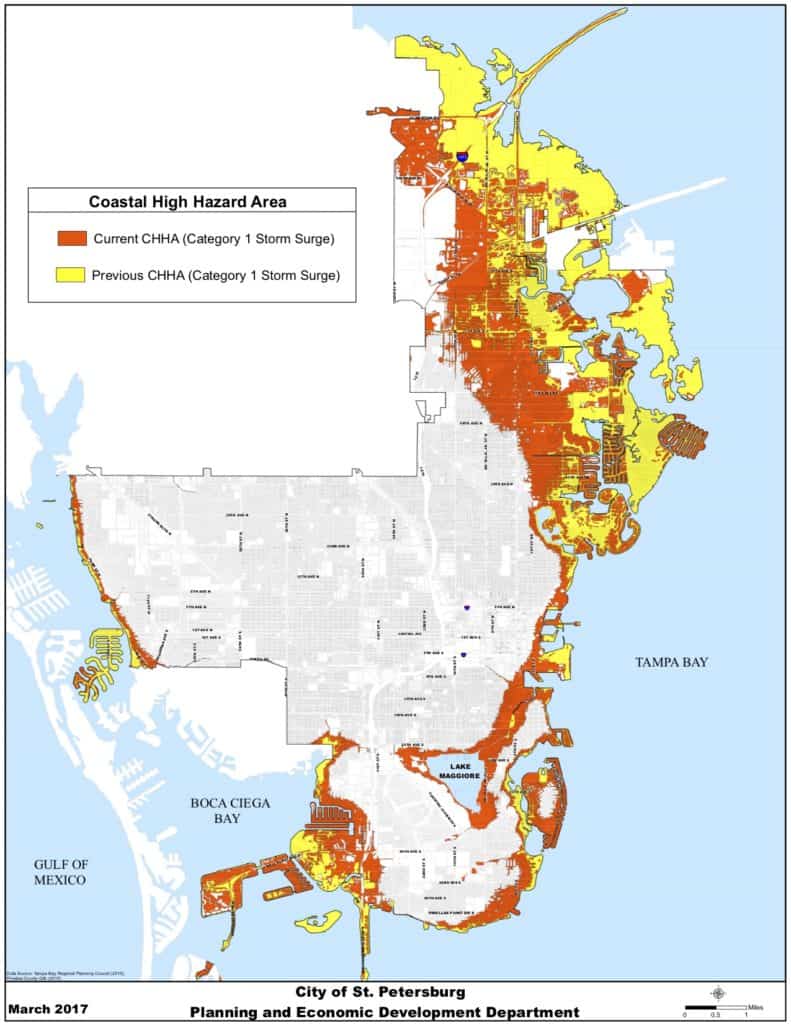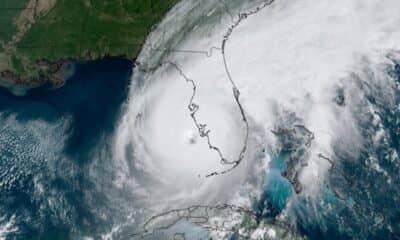Know
Growth, housing, safety debated as St. Pete City Council advances development plan for flood zones

Real estate developers would be allowed to propose apartments, condos and townhomes in parts of St. Petersburg that could flood during hurricanes, under a measure advanced by the City Council.
The multi-family projects would be considered on a case-by-case basis and would have to be resilient for storm surge and meet other guidelines as part of a plan for future development in Coastal High Hazard areas.
The decision to move the plan forward Thursday came after a nearly two-hour discussion in which council members, meeting as a committee of the whole, tried to balance public safety with growth and the need for more housing.
Coastal high hazard is a designation for areas that are below the elevation of a Category 1 storm surge line. St. Petersburg has 25 square miles of coastal high hazard area, or 41 percent of the city. That’s double the amount of city land in the coastal high hazard area as there was before 2016, when new maps were created.

The city currently prohibits increasing density – or dwelling units per acre — in coastal high hazard areas. Currently developers are not even permitted to request projects that would increase density in those areas.
Under the proposed change to the city’s comprehensive plan, a developer would be allowed to ask for an increase in density in order to build multi-family housing, which proponents say is badly needed in St. Petersburg.
Proposed changes to land development regulations would require developers to meet a lengthy list of standards, such as providing hurricane shelter mitigation and preparing hurricane evacuation plans, elevating the finished floors of their projects and constructing buildings to withstand higher wind speeds, among other things.
“There’s a lot of steps involved and a lot of review if an individual application were to come in for a project,” said Liz Abernethy, planning and development services director. “There’s no blanket proposal to change density anywhere in the city. This is simply changing a policy that prohibits any consideration of that.”
Related story: St. Pete City Council considers revamp to zoning code in areas that could flood in storms
City Council Member Steve Kornell unsuccessfully offered an amendment that would continue to bar developers from proposing multi-family projects in parts of the city that were designated as coastal high hazard before the 2016 expansion.
Kornell and other council members also questioned whether it would be better to wait on creating plans for coastal high hazard areas until after the city considers StPete2050, a community-wide conversation about the future of St. Petersburg. That process kicks off next month and is expected to take about a year.
Council member Brandi Gabbard said she didn’t want to wait until after the StPete2050 process is completed.
“The time is now to start having very realistic conversations about our coastal high hazard area, what that looks like and what it will look like into the future,” Gabbard said. “We’re talking about a coastal city that has 60 miles of coastline surrounding it. When we are not talking about how we redevelop and the building standards that are important to keep people safe … we are continuing to put people in harm’s way.”
Council members voted six-to-one, with Kornell voting no, to move forward with the changes.
The plan is far from a done deal. It still will be subject to workshops, public hearings and vetting by other public bodies, said City Council Chair Charlie Gerdes: “What we’re doing today is saying this recipe appears prepared enough to go forward to the cooking process. And the cooking process is pretty rigorous.”








Phil Stager
October 25, 2019at4:03 pm
Could not have said it better myself. Thanks, Karl.
Karl Nurse
October 25, 2019at1:13 pm
Increasing density in our most at risk (to a small hurricane, Cat 1) defies common sense. We should move to allow greater densities in the 60% of the city that is safer in hurricanes. When the big one comes, folks will look back on this decision as a critical moment.
In a city that brags endlessly about its sustainability efforts, this proposal goes in the exact opposite direction.